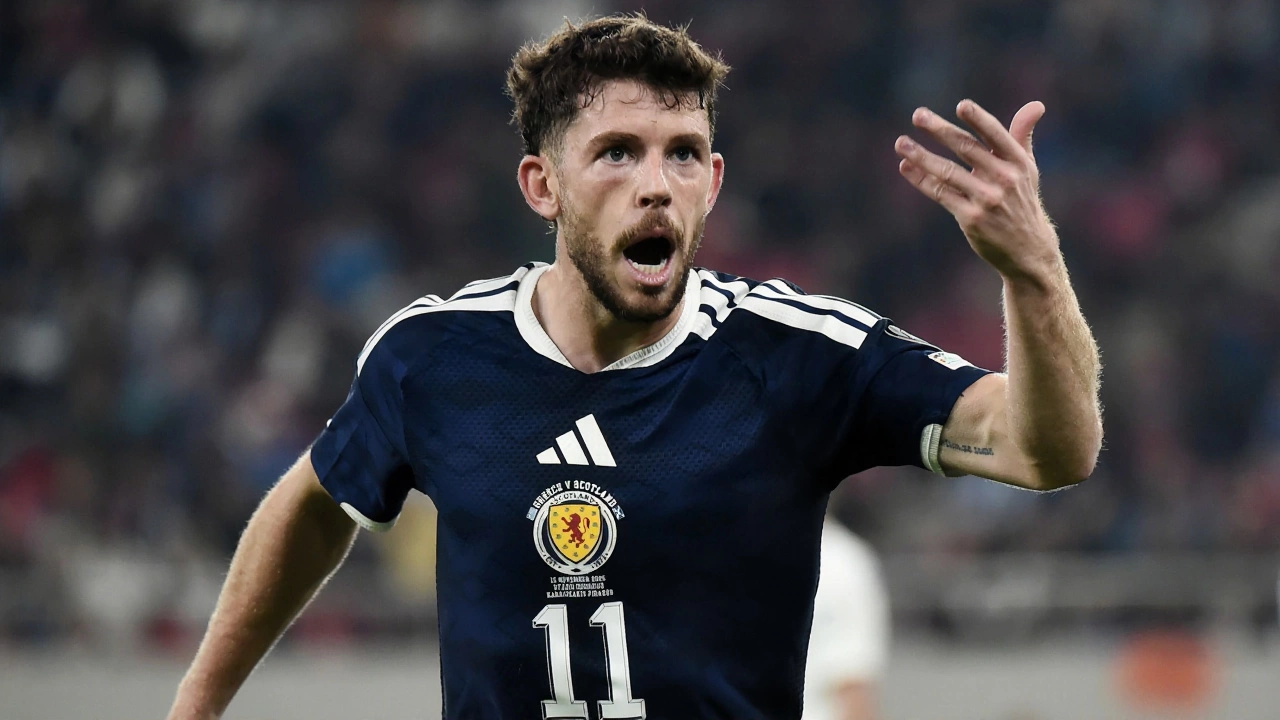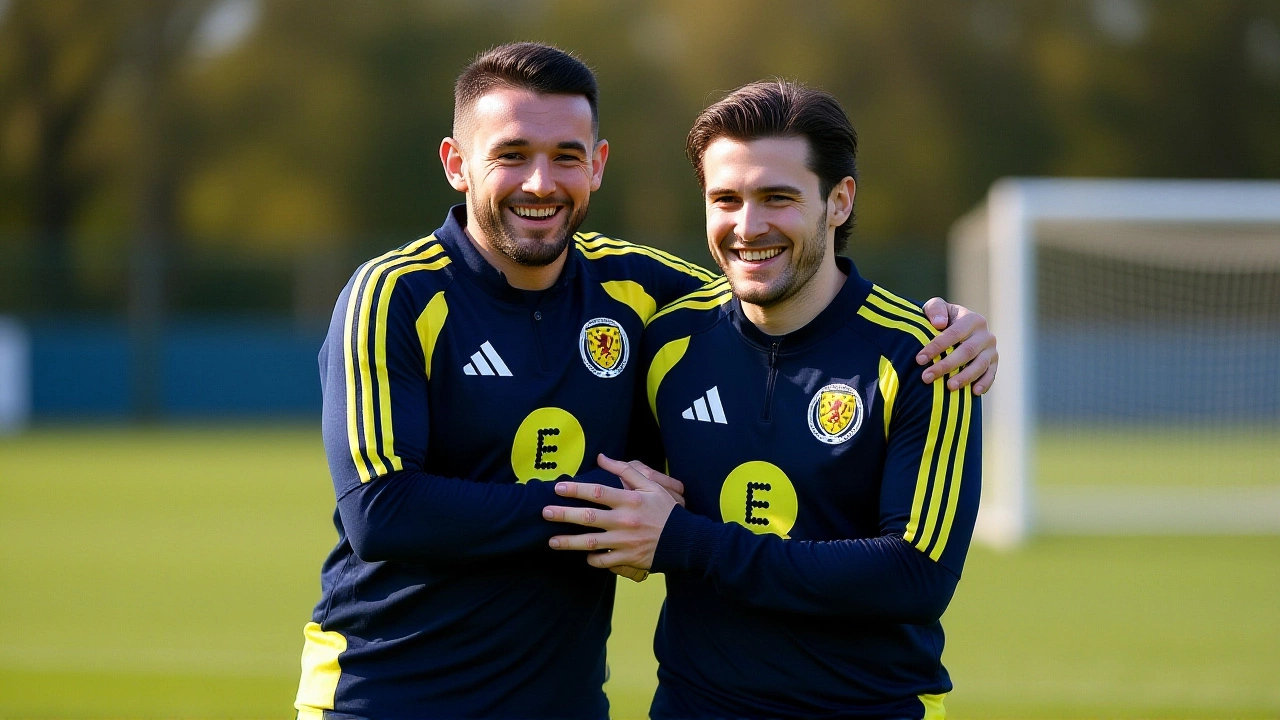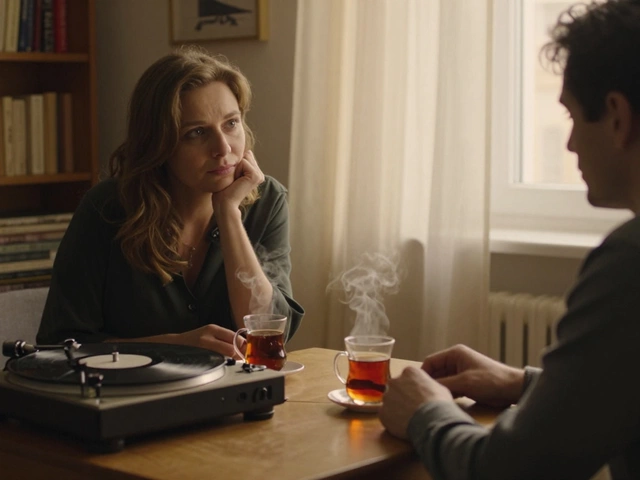On a biting November night in Glasgow, Hampden Park erupted like it hadn’t since 1990. Scotland’s 4-2 victory over Denmark on Glasgow didn’t just win a match — it ended a 28-year World Cup drought. The final whistle blew at 10:30 p.m. UTC, and for the first time since France 1998, the Scottish Football Association could officially declare: Scotland is back on football’s biggest stage. The win wasn’t just a result — it was a reckoning. Ten thousand and eleven days after that painful loss to Morocco in Sanen, the Tartan Army had their team again. And this time, they did it by topping their group — something Scotland hadn’t managed since the 1982 World Cup qualifiers in Spain.
How Scotland Broke the Drought
It wasn’t pretty. It wasn’t always dominant. But it was relentless. Scotland finished UEFA World Cup Qualification Group C with 13 points from six matches: four wins, one draw, one loss. They scored 13 goals, conceded seven — a +6 goal difference that edged out Denmark, who finished second with 11 points. The final group standings included Belarus, Greece, and Denmark, all of whom had chances — but none had the nerve of Scotland on matchday six.Goals came from unexpected places. Callum McTominay opened the scoring with a well-timed header. Lawrence Shankland doubled the lead with a clinical finish after a brilliant run by Ryan Christie. But the moment that sent the stadium into absolute bedlam? That belonged to Kenny McLean. At 500 seconds into the YouTube highlights — a moment replayed a million times in the next 48 hours — McLean collected a loose ball just outside the box, feinted past two defenders, and curled a left-footed rocket past Kasper Schmeichel. The announcer’s voice cracked: "The goal of his dreams." And for a nation that’s spent decades waiting for moments like this, it felt like destiny.
The Manager Who Made It Happen
Steve Clarke stood on the touchline, arms crossed, eyes fixed on the pitch — calm as a man who’d seen this script before. He’s not flashy. Doesn’t do press conferences full of buzzwords. But he’s built something tangible: discipline, structure, and belief. After Scotland’s 1-0 win over Greece in September, Clarke said, "We’re not here to make up the numbers. We’re here to win." And he meant it. He rotated his squad smartly, trusted veterans like Lewis Ferguson in midfield, and gave young talents space to breathe. His tactical adjustments in the second half — shifting to a 4-2-3-1 to protect the lead — were textbook. When the final whistle blew, Clarke was mobbed by his players. He didn’t celebrate. He just hugged them tighter. The moment was immortalized, not with fireworks, but with silence — the kind that follows a long, hard journey finally ending.
Denmark’s Heartbreak and the Road Ahead
For Denmark, it was cruel. Pierre-Emile Højbjerg pulled one back with a thunderous strike in the 62nd minute, and Andreas Cornelius equalized in the 78th. For a few minutes, the Danes dared to dream. But Scotland’s defense — anchored by John McGinn and Andrew Robertson — held firm. The final goal, scored by Matty Longstaff in the 89th minute, was the dagger. Denmark’s 11 points were enough to send them to the play-offs, but the disappointment was palpable. "We gave everything," said Højbjerg after the match. "But tonight, Scotland were just better. They deserved it."What This Means for Scottish Football
This isn’t just about 2026. It’s about legacy. Scotland hasn’t qualified for a World Cup since 1998. That’s a generation of fans who’ve grown up without seeing their team on the biggest stage. Now, a new cohort will watch their heroes compete in the 2026 FIFA World Cup — hosted for the first time across three nations: Canada, Mexico, and the United States. The tournament kicks off June 11, 2026, and Scotland’s group stage opponents aren’t yet known. But the draw will be held in December, and the anticipation is already building.Financially, the impact is massive. The Scottish Football Association estimates £85 million in tourism, merchandise, and broadcasting revenue from the 2026 campaign alone. Local businesses in Glasgow, Edinburgh, and Aberdeen are already preparing for World Cup fan zones. And for the first time since 1990, the Tartan Army will travel in full force — not as a hopeful minority, but as a legitimate contingent of 15,000+ fans expected to attend matches.

What’s Next for Scotland?
The immediate focus is the draw on December 7, 2025. Scotland will be seeded in Pot 2, meaning they could face heavyweights like Brazil, Portugal, or Argentina. But don’t count them out. With Clarke’s system in place, a core of experienced players, and a wave of youth coming through — including 19-year-old striker Liam Scales — Scotland isn’t just making up the numbers anymore. They’re building something. The next step? Prove they belong.And for the fans? They’ll be singing "Flower of Scotland" louder than ever. Because this time, they’re not just dreaming. They’re watching history unfold.
Frequently Asked Questions
How did Scotland qualify directly for the 2026 World Cup while Denmark went to the play-offs?
Scotland topped UEFA Group C with 13 points from six matches (4 wins, 1 draw, 1 loss), finishing ahead of Denmark (11 points). Only the group winner qualifies automatically; runners-up enter the play-offs. Scotland’s +6 goal difference and head-to-head advantage over Denmark (2-1 win at Hampden) sealed their top spot.
Who scored for Scotland in the 4-2 win over Denmark?
Goals came from Callum McTominay (12'), Lawrence Shankland (34'), Kenny McLean (500 seconds into highlights, approx. 55th minute), and Matty Longstaff (89'). The Scottish FA confirmed these scorers in its post-match report, though some early reports initially omitted Longstaff’s late strike.
Why is this Scotland’s first group win since 1982?
Scotland’s last group win came during the 1982 Spain qualifiers, where they finished first in their group. Since then, they’ve often finished second or third — missing out on direct qualification. The 2026 campaign marked the first time since 1982 that Scotland managed to finish top of a World Cup qualifying group, highlighting a shift in tactical discipline and consistency under Steve Clarke.
What’s the significance of the Tartan Army being present at Hampden for the first time since 1990?
The 1990 World Cup in Italy was Scotland’s last tournament appearance before this 2026 qualification. Since then, fans have watched from home during failed campaigns. The 2025 match drew 52,000 fans — the largest crowd at Hampden since 2017 — symbolizing renewed national pride and a reconnection between the team and its supporters after decades of disappointment.
How does the 2026 World Cup format differ from previous tournaments?
The 2026 World Cup expands to 48 teams, up from 32, with 16 groups of three teams. The top two from each group advance, plus eight best third-place finishers. This increases the chances for smaller nations like Scotland to progress, but also means tougher competition. Matches will be spread across Canada, Mexico, and the United States — the first three-nation host setup in World Cup history.
What’s next for Steve Clarke and the Scottish squad?
Clarke will focus on integrating youth talent like Liam Scales and Cameron Archer into the senior squad ahead of the June 2026 tournament. He’s also scheduled to meet with the Scottish FA in December to finalize training camps and friendly matches against top-tier nations like Belgium and Portugal to prepare for potential group opponents. The goal? Not just to participate — but to make a statement.



